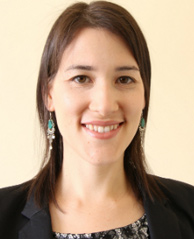
Associate Professor Jacinta Holmes
A functional cure for Hepatitis B Virus is a realistic goal with several new therapies under investigations showing promising early results, GESA conference delegates heard this week.
Speaking during the afternoon liver session held Saturday 4th Sept, Associate Professor Jacinta Holmes, gastroenterologist and hepatologist at St Vincent’s Hospital in Melbourne, said novel treatment approaches could also see hopes of complete cure and even sterilisation cure become a very real possibility.
Presenting an overview of pipeline treatments in a session titled Hepatitis B cure – fantasy or emerging reality? Professor Holmes said current treatment with NCUs, while an effective suppressive strategy, is inadequate as a cure strategy.
“Current nucleose(t)ide analogue therapies really just lead to viral suppression – there’s no change in cccDNA, the Integrated DNA or the surface antigens as these [agents] do not affect those pathways”, she told delegates.
Referring to a meta analysis of 188,316 chronic HBV patients published this year Professor Holmes said there was a 76% reduction in the risk ratio for liver decompensation, liver cancer, liver transplantation, death and first clinical event in patients who achieve surface antigen loss compared to those who don’t.
“So this is now the endpoint in terms of therapy for our patients. We need to be looking at functional cure for best outcomes.”
Functional cure refers to the loss of surface antigen, with or without seroconversion, in the context of undetectable HBV DNA off therapy.
Meanwhile, complete cure achieves the same but also eliminates cccDNA – the DNA structure that arises during the propagation of the virus.
Treatment pipeline
Discussing the latest HBV treatment trial data Professor Holmes said the entry inhibitor bulevertide will be available in Australia in 2023, has been shown to block the NTCP receptor and, when combined with interferon therapy, causes a drop in HBV DNA.
Immune mediated therapies are also likely to feature in treatment algorithms, noted Professor Holmes. And while they have limited responsiveness in reducing cccDNA they do it to some degree and may be used in combination with other therapies and they are in commercial development, she adds.
Another approach under investigation is transciption inhibition with siRNAs or antisense oligonucleotides. In development now is JNJ-3989. So far, it shows three doses provides ‘a very robust’ reduction on hep b surface antigen levels compared to baseline with a 2-3 log reduction.
But a trend towards increasing levels after dosing shows that multiple, or longer term dosing is required for these agents, said Professor Holmes.
“This study looked at longer-term dosing and what it shows is that these siRNAs induce potent surface antigen reduction but at about 16 weeks for all of these agents you can see there’s a plateauing of surface antigen decline suggesting that there’s a maximum benefit of these agents.”
The drug is currently being studied in combination with pegylated interferon, given up front for 24 weeks. Early data suggests the combination significantly reduces surface antigen levels compared to an add-on pegylated or mono strategy
Meanwhile the core inhibitors, or the capsule assembly modulators (CAM), have been of interest. These agents have a role in cccDNA reduction, said Professor Holmes, and also have a role in encapsidation of the virus as well as in recycling the virus material back into the nucleus
“So they have a multi pronged approach in terms of potentially inducing not only functional cure but also complete cure.”
The CAM dubbed JNJ-440 -N significantly reduces RNA levels and DNA levels by 2-3.3 logs, which Professor Holmes called ‘very potent.’ But because they don’t affect the surface antigen or e-antigen pathways there’s no significant change seen in these areas which means the drug would also need to be used in combination with other therapies.
“While these novel strategies are very exciting it is likely that we’ll have to attack multiple steps in the HBV lifecycle in order to achieve functional cure and hopefully complete cure and maybe even sterilising – a strategy that includes a combination of those that inhibit viral replication those that lower viral antigen burden and those that boost immune response in order to clear virus,” she concluded.